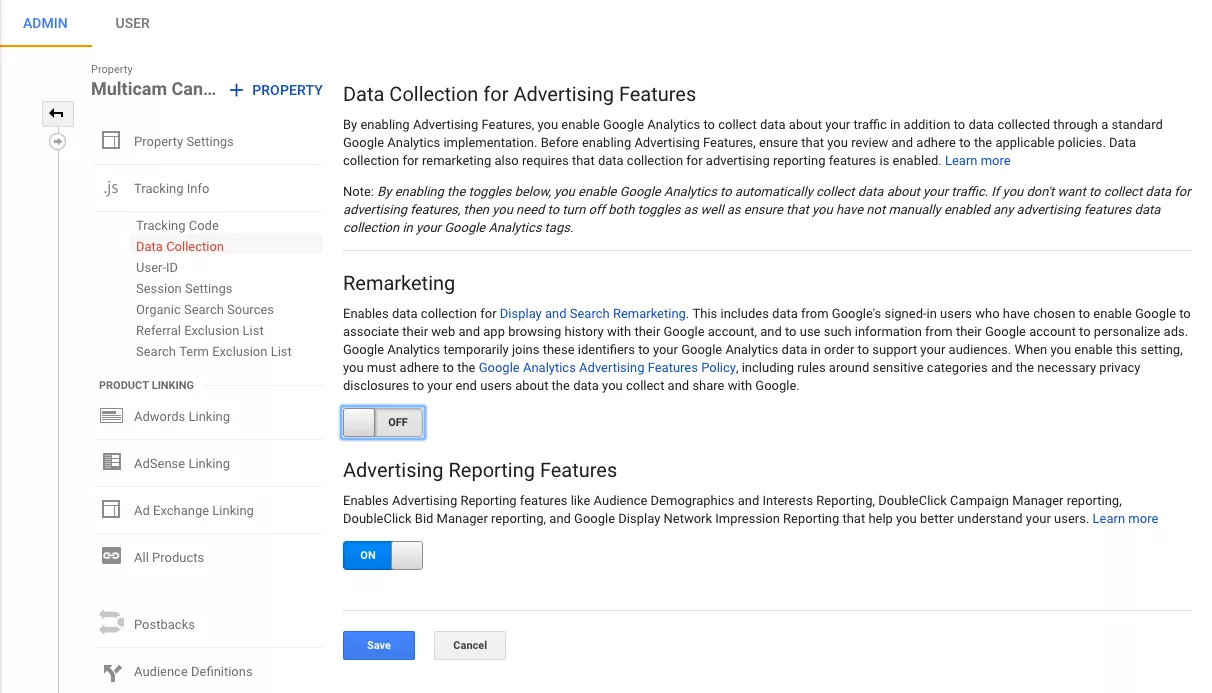Key Features of Remarketing In Google Analytics Explained
Key Features of Remarketing In Google Analytics Explained
Blog Article
Maximize Your ROI With Remarketing in Google Analytics
In the realm of digital advertising, the utilization of remarketing methods within Google Analytics has confirmed to be a potent tool for boosting roi. By utilizing the power of user data and tailoring ads to details target market segments, businesses can substantially enhance their conversion rates. The real key lies in the art of precision - understanding user behavior, crafting engaging ads, and constantly refining methods to drive ideal results. The trip to making best use of ROI with remarketing is a nuanced path paved with insights and possibilities that can improve the trajectory of your advertising undertakings.
Understanding Remarketing in Google Analytics
Comprehending remarketing in Google Analytics is necessary for enhancing your electronic marketing strategy. Remarketing enables you to target users that have previously seen your internet site or interacted with your app, presenting them with tailored ads as they surf other websites or make use of various other applications within the Google Show Network. This technique assists keep your brand name top of mind and encourages users to go back to your site, eventually enhancing the chance of conversion.
By using Google Analytics, you can track the performance of your remarketing projects, acquiring valuable understandings into individual behavior, engagement, and conversions. This data allows you to refine your bidding, targeting, and messaging strategies to enhance the total performance of your campaigns.
In addition, recognizing the various kinds of remarketing listings readily available in Google Analytics, such as typical, dynamic, and similar target markets, allows you to create very segmented and individualized projects customized to specific individual sectors. This degree of granularity can substantially enhance the importance and influence of your remarketing efforts, inevitably maximizing your roi.
Establishing Up Remarketing Listings
To efficiently execute remarketing projects in Google Analytics, the initial action entails setting up and creating remarketing checklists targeting specific user sectors based upon their interactions with your internet site or app. By establishing remarketing checklists, you can customize your marketing efforts to get to individuals that have actually currently shown interest in your solutions or items.
To begin, browse to the Admin area of your Google Analytics account and select the Property where you intend to develop the remarketing listing. Under the Property column, click on 'Audience Definitions' and choose 'Target markets.' Next, click on the red 'New Target market' switch and select 'Develop New' to define the specifications for your remarketing checklist.

Crafting Efficient Remarketing Advertisements

When crafting your advertisements, concentrate on creating eye-catching headlines and compelling visuals that stand out to potential consumers. Integrate solid calls-to-action that encourage customers to review your site and finish a preferred activity. Use dynamic remarketing to show tailored advertisements including services or products that customers have actually formerly checked out on your site.
Furthermore, guarantee that your advertisements are mobile-friendly considering that a substantial part of net website traffic originates from smart phones. Examination various ad variants to identify which messages and layouts drive the very best results. By continuously refining and optimizing your remarketing ads based on efficiency information, you can optimize their efficiency and boost your return on investment.
Studying Remarketing Performance

Via Google Analytics, marketing experts can track the performance of their remarketing campaigns in real-time, enabling them to identify fads, patterns, and locations for renovation immediately. By examining the information, marketers can identify which advertisements are carrying out well, which audience sections are responding favorably, and which channels are driving the most conversions. This level of granularity enables marketing professionals to make data-driven choices to optimize their remarketing advocate much better results.
Optimizing ROI With Remarketing
Evaluating remarketing data in Google Analytics allows online marketers to pinpoint opportunities for enhancing roi (ROI) via critical adjustments - What Is “Remarketing” In Google Analytics?. To take full advantage of ROI with remarketing, it is important to understand the actions of your audience. By assessing user interactions, such as the pages they visited, the products they saw, or the activities they took on your site, you can customize your remarketing campaigns better
Segmenting your target market based upon their actions enables you to produce tailored and targeted advertisements that are more likely to resonate with them. By revealing appropriate advertisements to look at this site certain sectors of your audience, you can boost the opportunities of conversion and inevitably improve your ROI.
In addition, checking various advertisement creatives, messaging, and offers can help identify what reverberates ideal with your target market. A/B screening allows you to experiment with various aspects of your ads to establish what drives the highest possible engagement and conversion rates.
Verdict
In verdict, taking full advantage of ROI with remarketing in Google Analytics needs a strategic strategy to analyzing customer habits, segmenting audiences, creating tailored ads, and optimizing project performance. By leveraging data-driven understandings and evaluating various methods, businesses can boost their remarketing initiatives to drive greater engagement and conversion rates. This organized technique ensures that resources are effectively alloted in the direction of maximizing returns on investment in remarketing projects.
Next, company website click on the red 'New Audience' button and select 'Develop New' to specify the criteria for your remarketing listing.
By constantly refining and optimizing your remarketing advertisements based on efficiency data, you can optimize their performance and enhance your return on financial investment.
By diving right into these insights, marketing professionals can obtain a comprehensive understanding of how their remarketing efforts are resonating with their target audience and driving conversions. To make the most of ROI with remarketing, it is crucial to comprehend the actions of your audience.In final thought, making best use of ROI with remarketing in Google Analytics requires a strategic approach to assessing individual behavior, segmenting target markets, developing customized ads, and maximizing campaign performance.
Report this page